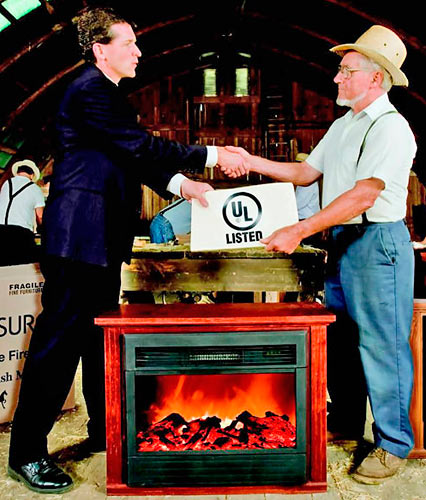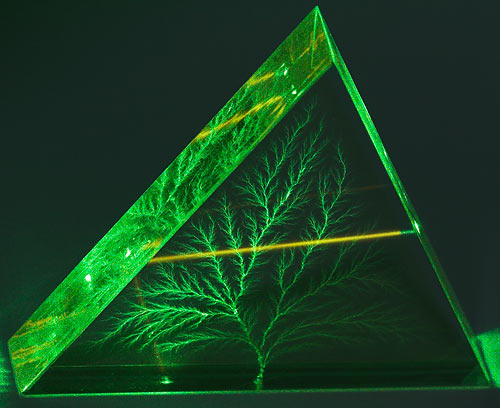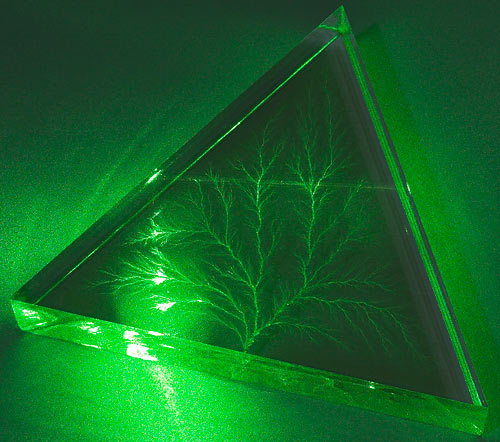Hot on the heels of my post about the rather audacious "Amish" fan heater, came this:
I've been seeing commercials on TV that proclaim the advantages of a certain compact heating system that uses some sort of mixture of infrared lamps and a heat exchanger. They also claim, like the "Amish" heater people, that it uses less electricity than a coffee maker.
Now, I live in a 120+ year old house, and I'm quite... thrifty. Given the rise in natural gas prices, this of course piqued my interest.
The "Portable Furnace" is a similar product to the one in the ads.
Still, something sounds off here. I remember in my grandparents' old cottage they had a heating lamp of some description in the bathroom, over the spot one would be when one stepped outside of the shower door. It worked well then, but move a few inches either way and it was quite useless.
Smoke and mirrors?
Joe
I'll be darned if the "Portable Furnace" isn't just another surprisingly expensive ($US599!!) 1500-watt fan heater.
It's a nice-looking one that probably doesn't make much noise and may last longer than the $10 discount-store type, but it's still essentially the same thing. And, once again, the ads are trying to trick people into thinking it's something special, when it really, really isn't.
I can say this with such confidence because basic physics tells us that all resistive electrical heaters are, to a first approximation, exactly the same.
In a resistive heater - actually, in any electrically powered device at all - each watt of electricity ends up as one watt of heat. End.
You can change exactly how a heater delivers its heat to the room - as infrared light, in the case of a simple old-fashioned "bar" heater with a reflector, or as a rising column of convective hot air, in the case of an oil-filled heater, or as a hot breeze, in the case of a fan heater. You can even get all tricky and add a ceiling fan, probably spinning in the opposite direction to the way it spins in summer, to suck air up in the middle of the room and blow it down the walls, thus preventing hot air from gathering up by the ceiling where nobody is sitting.
But the base efficiency of the system is exactly the same for all electrical heaters.
The allegation that the Portable Furnace's heating elements are in some way special because they're big light bulbs (I presume the same kind you get in the bathroom ceiling heaters you mentioned) instead of the simple coiled element you get in a $10 fan heater is nonsense. It would make a difference if the light bulbs were pointing at you - instant warmth on the side of you facing the bulbs, at the price of a lot of glare - but since they're just pointing at some heat exchanger doodad inside the heater, over which a fan moves air, the end result will be exactly the same as that of any other fan heater, except presumably with a bit of a jolly glow coming out of the exhaust slot.
(The kind of heat lamp you see keeping reptiles and birds warm, that has a deep red glow, looks that way because there's a red filter over the lamp. Heat lamps really are basically just big bright light bulbs; they run at a relatively low temperature by light bulb standards, but without a filter 375 watts of heat lamp is still good for easily as much visible light output as a regular 200W bulb.)
If the diagram on the "how it works" page is accurate, the Portable Furnace's 1500 watt power rating and four bulbs means this thing does indeed have four 375W heat lamps inside it, just like a normal bathroom light-heat-and-fan combo package here in 230-volt Australia. Those lamps have a pretty long lifespan, but I'd be surprised if they lasted any longer than an ordinary cheap fan heater. Hence, I suppose, the availability of replacement Portable Furnace lamp sets (for a mere eighty bucks - which is easily twice what they ought to cost...).
The advantage of resistive electric heat is that you can have exactly as much heat as you need, exactly when you need it, from a dirt cheap heater. No other technology can give you that two minutes of heat while you're towelling off after your shower. And if you really do need to heat only one room, a central heating system with a furnace will waste considerable heat even if you remember to close the vents in all of the other rooms.
But resistive electrical heating is still more expensive per unit of heat than all of the other technologies. It's a lousy solution for long-term applications. And the "dirt cheap heater" advantage kind of goes away, too, if someone suckers you into paying six hundred freakin' dollars for a fan heater. Sheesh.
If gas or other combustion heating is out of the question, consider reverse-cycle air conditioning. That's much more efficient than resistive heating, because it uses some electricity to pump heat from one place to another, and adds its own waste heat. The result is at least two times, maybe 2.5 times, as much heat output as electricity input. The only big disadvantage is that if the cold side of a normal air conditioner is cooled close to freezing, it won't be able to pump any more heat from it - so reverse-cycle works well for heating in relatively temperate climates, but is no good if a real winter has set in.
Air-con's also not cheap to buy - you certainly can get a basic reverse-cycle window air conditioner for the price of a Portable Furnace, but that ain't saying much. And even a window air conditioner is not entirely trivial to install. Portable air conditioners need a certain amount of "installation" too (cumbersome hoses...), and they have lousy efficiency. And all air conditioning is kind of goofy unless you intend to use it at least occasionally for cooling as well.
Cheap air conditioners also all still use the old "binary" control system; they're either pumping heat at full power, or not pumping any heat at all. You have to pay extra to get an "inverter" system that's able to run at fractional powers, which is often what you actually want rather than endless noisy thermostat-driven cycles.
The very best electrical heating, though, is the kind you get as a side-effect of something else that you'd be doing anyway.
If your TV consumes 100 watts while it's on, you get 100 watts of heat out of it, "for free". The same goes for every other electrical appliance in the house, definitely including computers. This is bad if you're paying to cool your house (or room full of servers...), but it's great if you're paying to heat it.
So if you're to the point where you're considering resistive electrical heating anyway, think about more entertaining things you can get that electricity to do on the way to warming the room. Even if all you do is abolish all traces of Seasonal Affective Disorder by lighting your living room with two $25 500-watt halogen shop floods pointed at the ceiling, that still beats the hell out of being suckered into paying $600 for a lousy fan heater!








